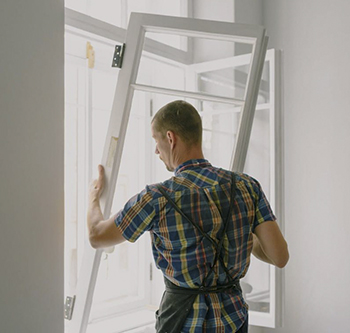Collective restraint systems
Collective restraint systems are passive safety systems designed to stop personnel from falling when working from significant heights. Once collective restraint systems have been installed, they do not require workers to take proactive measures in order to be safe. This is why they are considered passive safety measures.
Unlike personal fall arrest or fall prevention systems, collective restraint systems protect numerous workers across a large area. To protect personnel working in high-risk areas, systems should be at least 1.2m high and placed around the perimeter of the area.
Systems can include:
- Guardrails. A guardrail is a longitudinal barrier that prevents people from falling or straying into a dangerous or restricted zone.
- Barriers or guardings. These are structures – either raised rails, parapets or walls – that deny access to unsafe areas
- Purlin trolleys. Purlin trolleys provide workers with a safety deck to walk on and protect them from exposure to edging. They are frequently used in roofing installations.
Some systems are static and do not require removal when they are not in use, but some do not need to be permanently installed and can be disassembled.
If a collective restraint system is not in place, personal fall arrest systems should be used to protect workers in situations where falls are possible.
[edit] Related articles on Designing Buildings Wiki
- Approved Document K.
- Barrier.
- BS 7883.
- BS 7883 guide released.
- Construction (Design and Management) Regulations.
- Fall arrest system.
- Fall prevention systems.
- Guarding.
- Guardrail.
- Injuries on construction sites.
- Personal fall protection system.
- Purlins.
- Railings.
- Safety in high places.
- Safety systems for working at heights.
- Site safety.
- Work at height checklist for managers.
- Work at height regulations.
- Work at height.
- Working at height - our duty to prevent harm and protect each other.
- Working at height training.
[edit] External resources
Featured articles and news
Licensing construction in the UK
As the latest report and proposal to licence builders reaches Parliament.
Building Safety Alliance golden thread guidance
Extensive excel checklist of information with guidance document freely accessible.
Fair Payment Code and other payment initiatives
For fair and late payments, need to work together to add value.
Pre-planning delivery programmes and delay penalties
Proposed for housebuilders in government reform: Speeding Up Build Out.
High street health: converting a building for healthcare uses
The benefits of health centres acting as new anchor sites in the high street.
The Remarkable Pinwill Sisters: from ‘lady woodcarvers’ to professionals. Book review.
Skills gap and investment returns on apprenticeships
ECA welcomes new reports from JTL Training and The Electrotechnical Skills Partnership.
Committee report criticises UK retrofit schemes
CIOB responds to UK’s Energy Security and Net Zero Committee report.
Design and construction industry podcasts
Professional development, practice, the pandemic, platforms and podcasts. Have we missed anything?
C20 Society; Buildings at Risk List 2025
10 more buildings published with updates on the past decade of buildings featured.
Boiler Upgrade Scheme and certifications consultation
Summary of government consultation, closing 11 June 2025.
Deputy editor of AT, Tim Fraser, discusses the newly formed society with its current chair, Chris Halligan MCIAT.
Barratt Lo-E passivhaus standard homes planned enmasse
With an initial 728 Lo-E homes across two sites and many more planned for the future.
Government urged to uphold Warm Homes commitment
ECA and industry bodies write to Government concerning its 13.2 billion Warm Homes manifesto commitment.
From project managers to rising stars, sustainability pioneers and more.
Places of Worship in Britain and Ireland, 1929-1990. Book review.
The emancipation of women in art.























